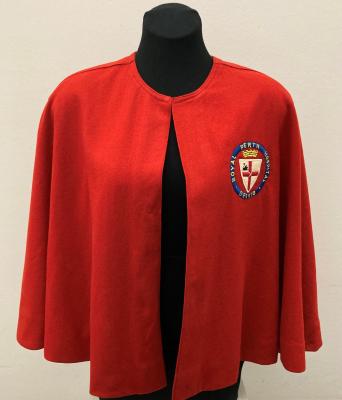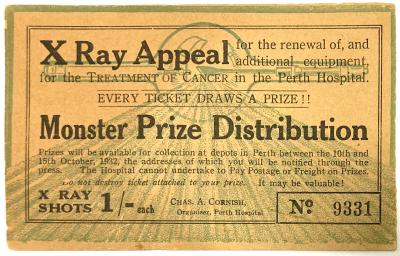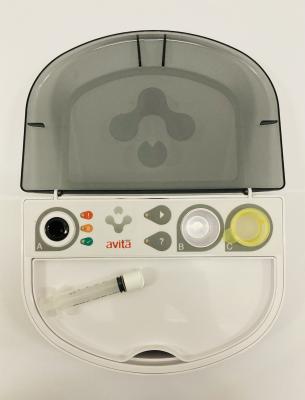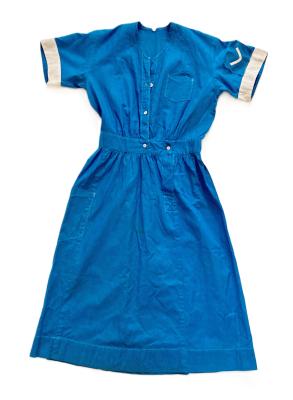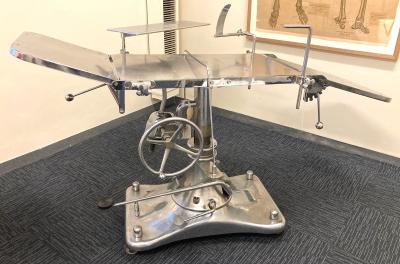IRON LUNG
c. 1960 - 2000This iron lung, or tank respirator, comprises a long, rectangular cream-coloured painted plywood cabinet raised on a metal trolley. Metal struts at one end held a support and pillow for the patient's head. At the opposite end is a heavy metal cylindrical counter-balance, used as a cantilever to raise and lower the lid of the cabinet. The cabinet has three round, painted silver hinged covers on either side that can be opened to attend to the patient. Rubber seals inside the hinged covers and the neck area prevented air escaping and maintained the air pressure. The rubber seals are deteriorating.
The apparatus has a separate large, very heavy metal pump with a gear box and bellows made from wood and vinyl. The pump was connected via an air hose to the cabinet. The pump blew air alternatively into and out of the cabinet, causing a rise and fall of the inside pressure. When pressure inside the tank was released, air inside the patient's lungs expanded.
The iron long was used to ventilate poliomyelitis (polio) patients whose respiratory muscles had been severely affected by the disease and were unable to breathe independently. The iron lung enclosed all of the patient's body except the head.
The Both respirator, also known as the Both Portable Cabinet Respirator, was invented by Edward Both in South Australia in 1937. The Both respirator was made from plywood and was an affordable, more transportable alternative to the earlier metal iron lungs. It was used widely in Australia in the 1940s and 1950s following Polio epidemics.
Details
Details
This iron lung was used by patient Paul Berry at Shenton Park Hospital where he was a patient for forty-nine years, from 1956 until his death in 2005. He was the last polio patient to use an iron lung in Western Australia.
Berry contracted polio as a 28 year-old labourer. He learned to breathe independently and did not always require the iron lung. In 1964 he started learning to paint with a brush with his toes. From 1982 - 1985 Paul did an art history course at Perth Technical College. For four years he used a tape recorder placed on top of the iron lung to record his assignments and exams.
The item is of scientific, historic and social significance. The item has well established provenance. It was used by Paul Berry at Shenton Park Rehabilitation Hospital. Berry was the last polio patient to use an iron lung in Western Australia.
Other items from Royal Perth Hospital Museum
- NURSE'S CAP
- CAPE, NURSE'S
- TUB, METAL
- AMERICAN FROHSE ANATOMICAL CHART, CIRCULATORY
- ARCHITECTURAL DRAWING, PERTH HOSPITAL NURSES QUARTERS, DETAIL OF TURRET
- XRAY APPEAL TICKET, NO. 9331
- COVID-19 ASTRAZENECA VACCINE PHIAL
- SURGICAL CAP
- RECELL AUTOLOGOUS CELL HARVESTING DEVICE
- Save RPH Quilt
- Uniform, Nurse
- Operating Table
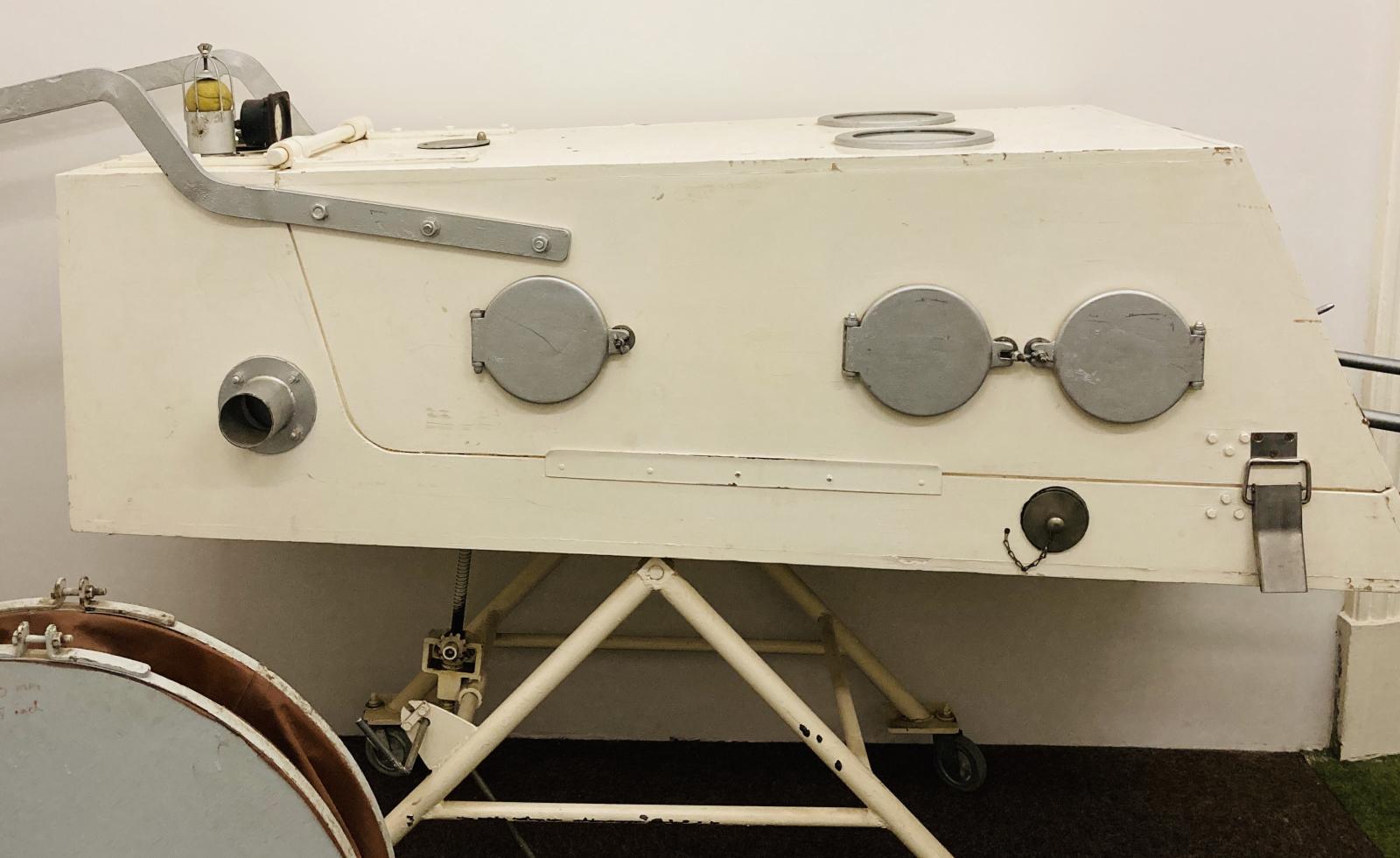
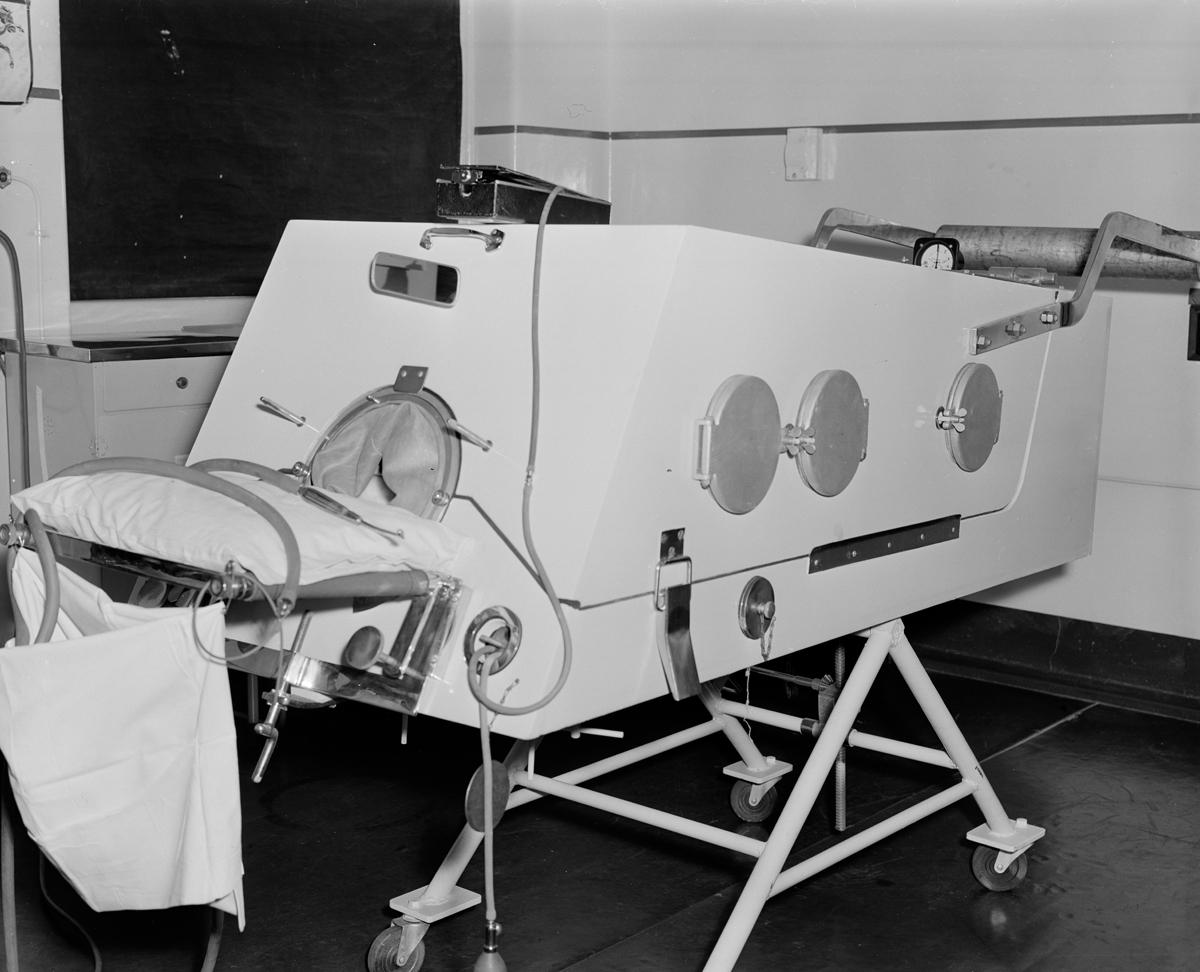
Scan this QR code to open this page on your phone ->


